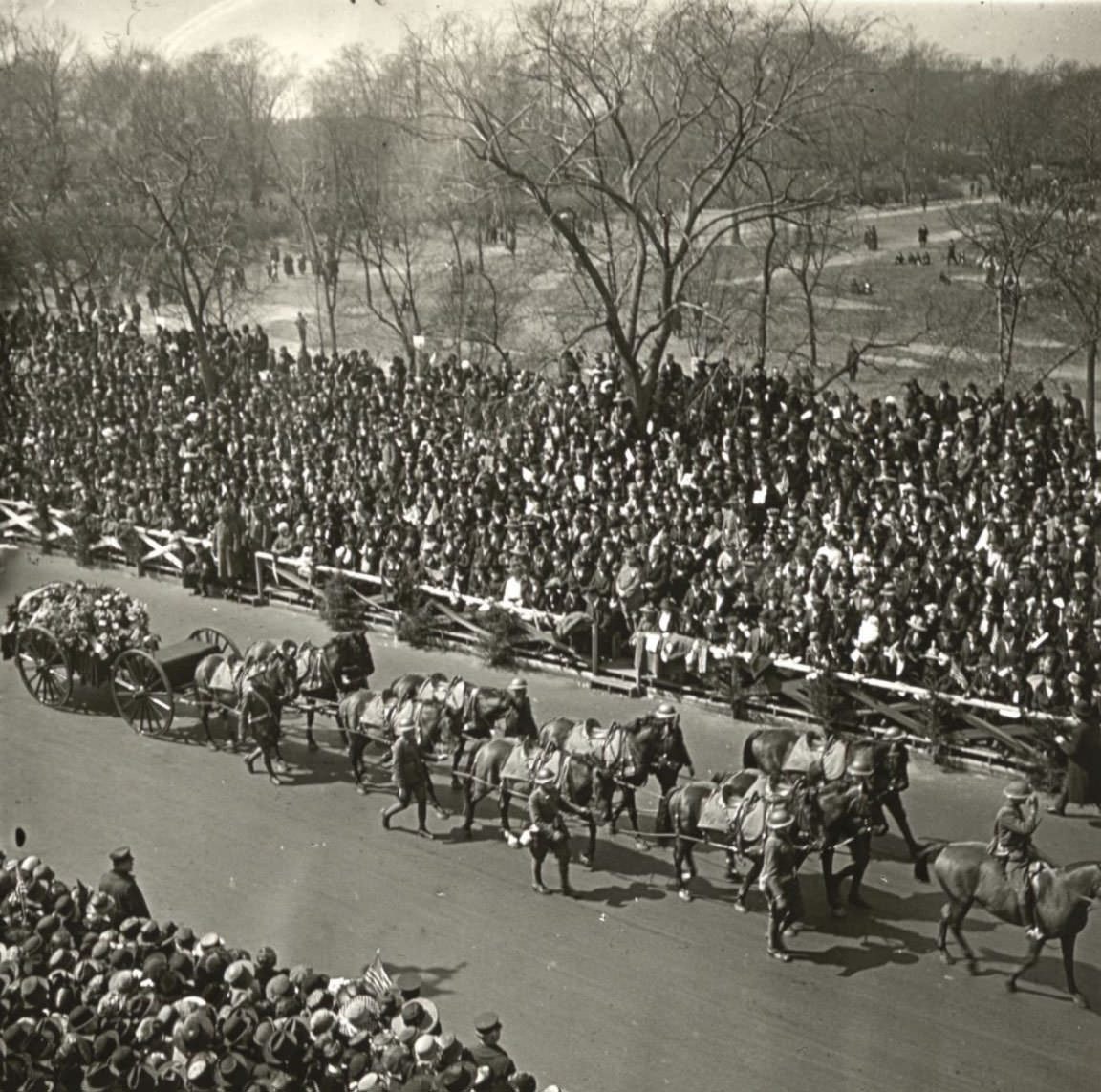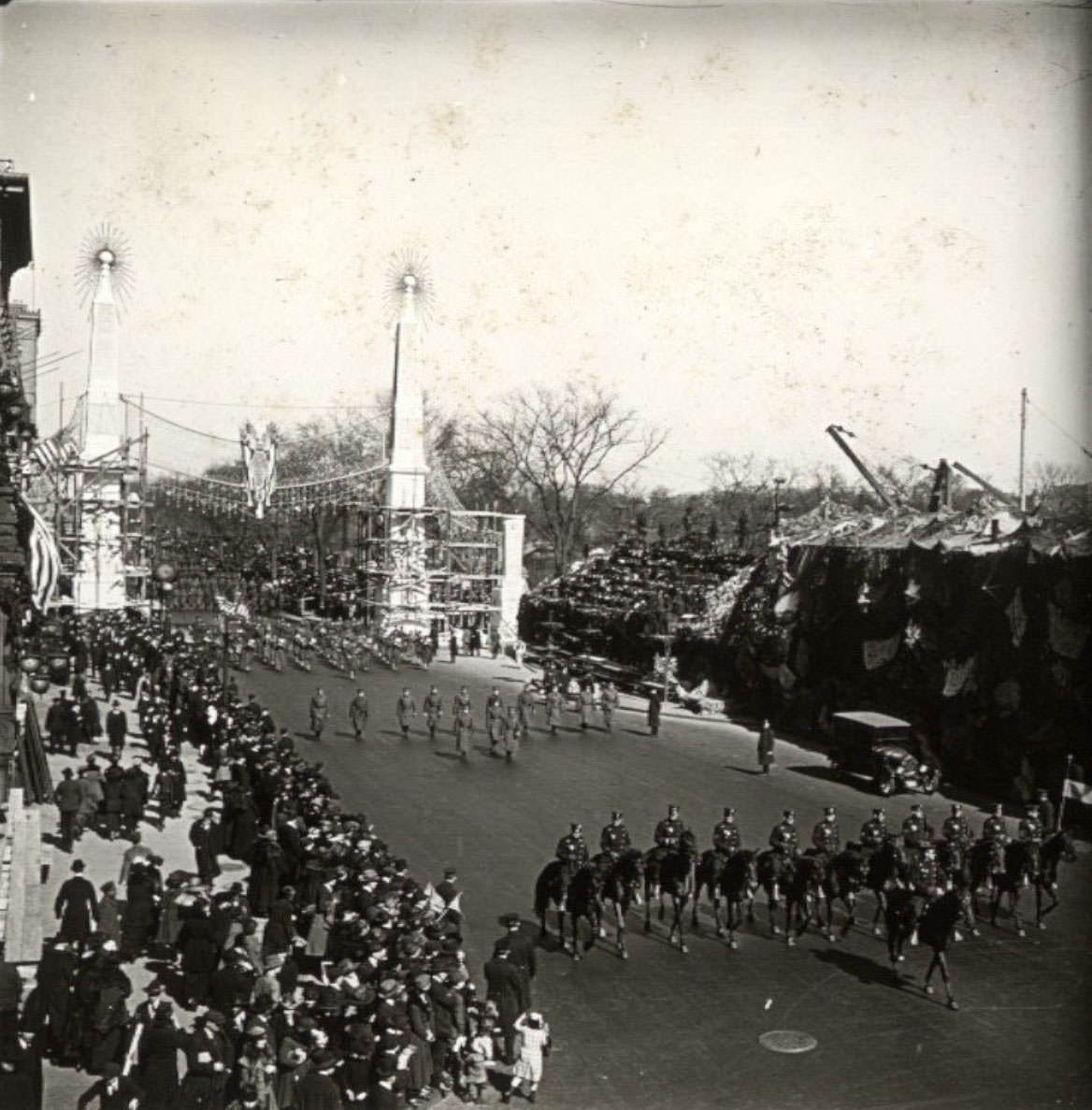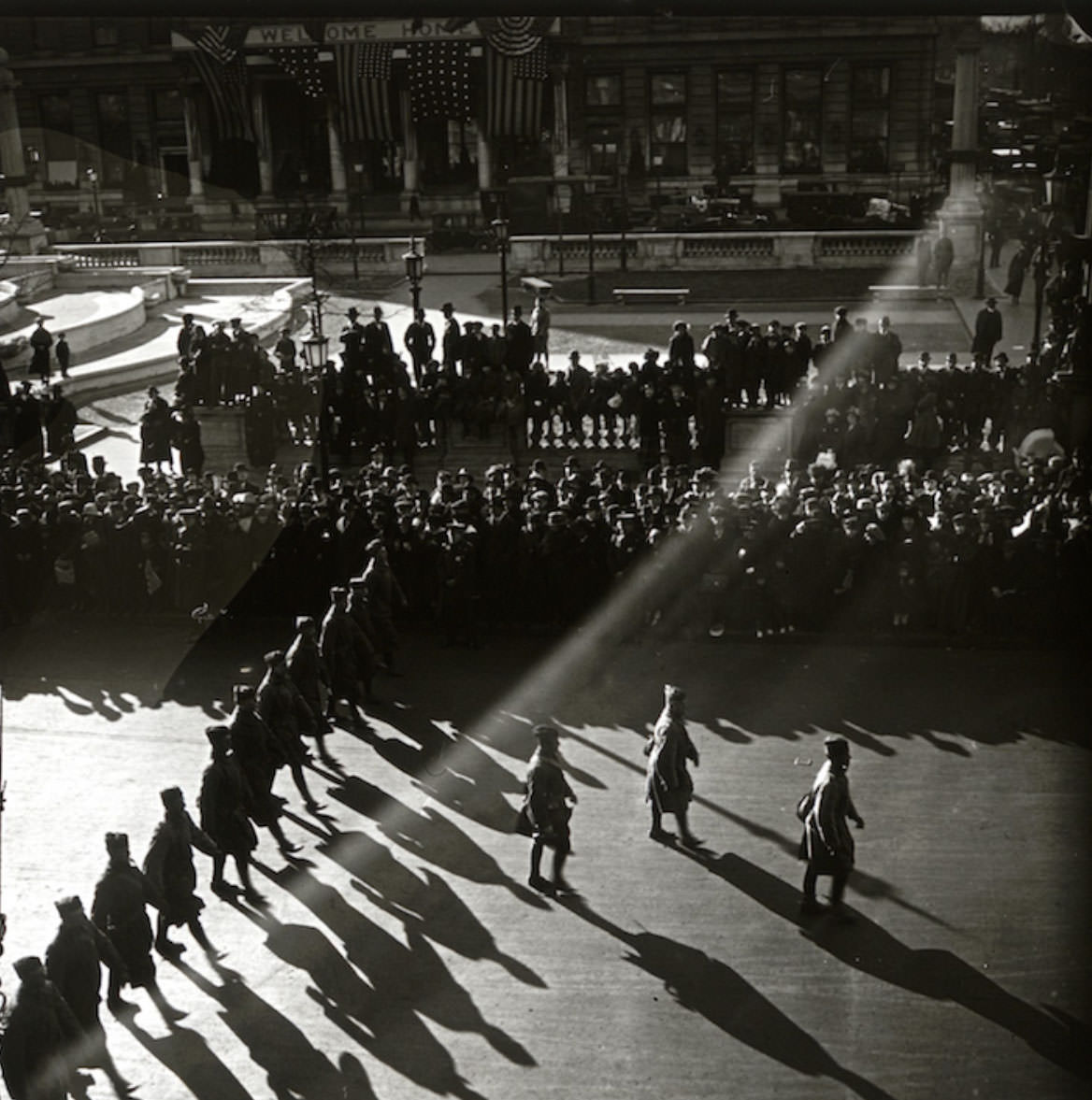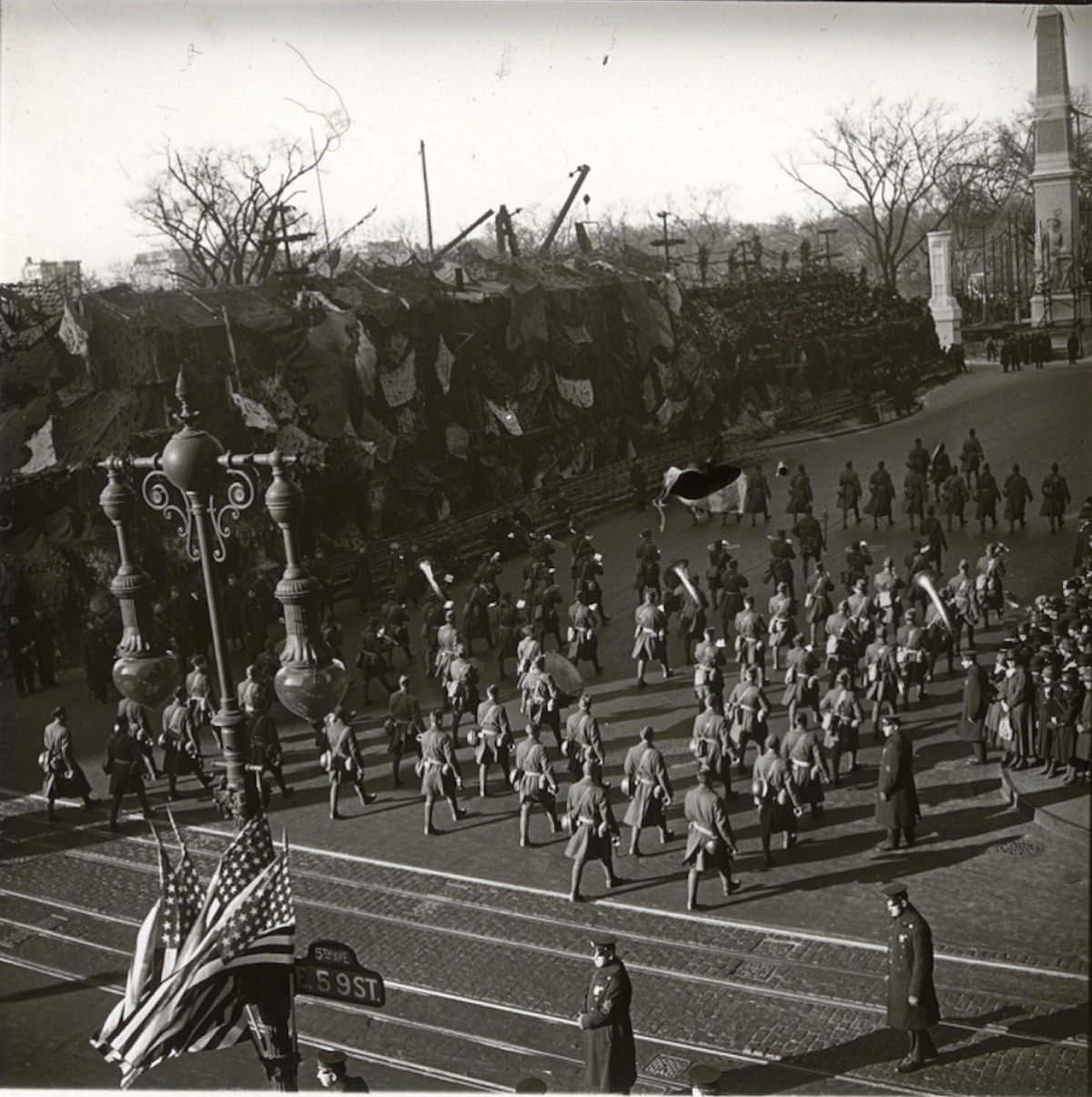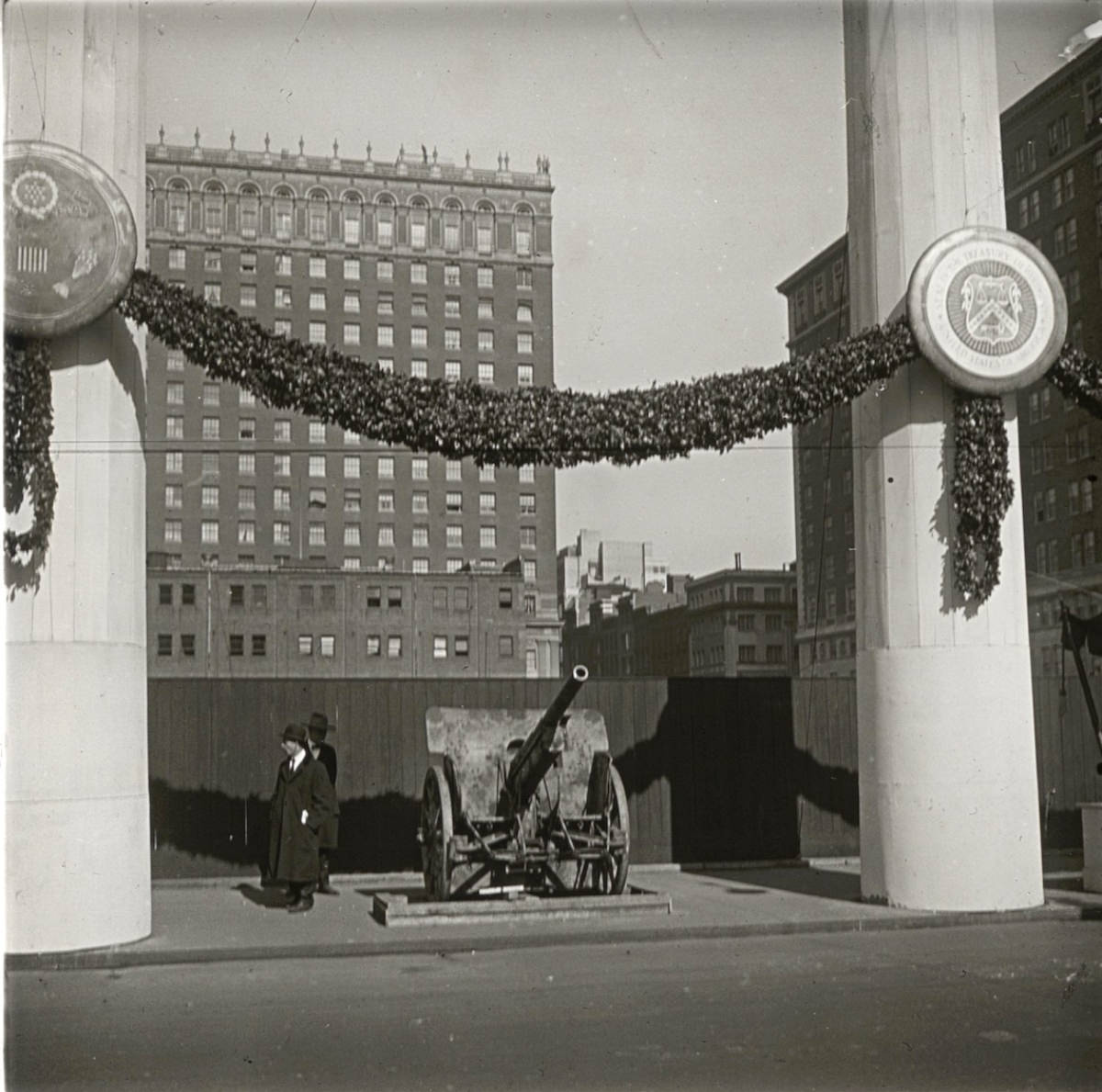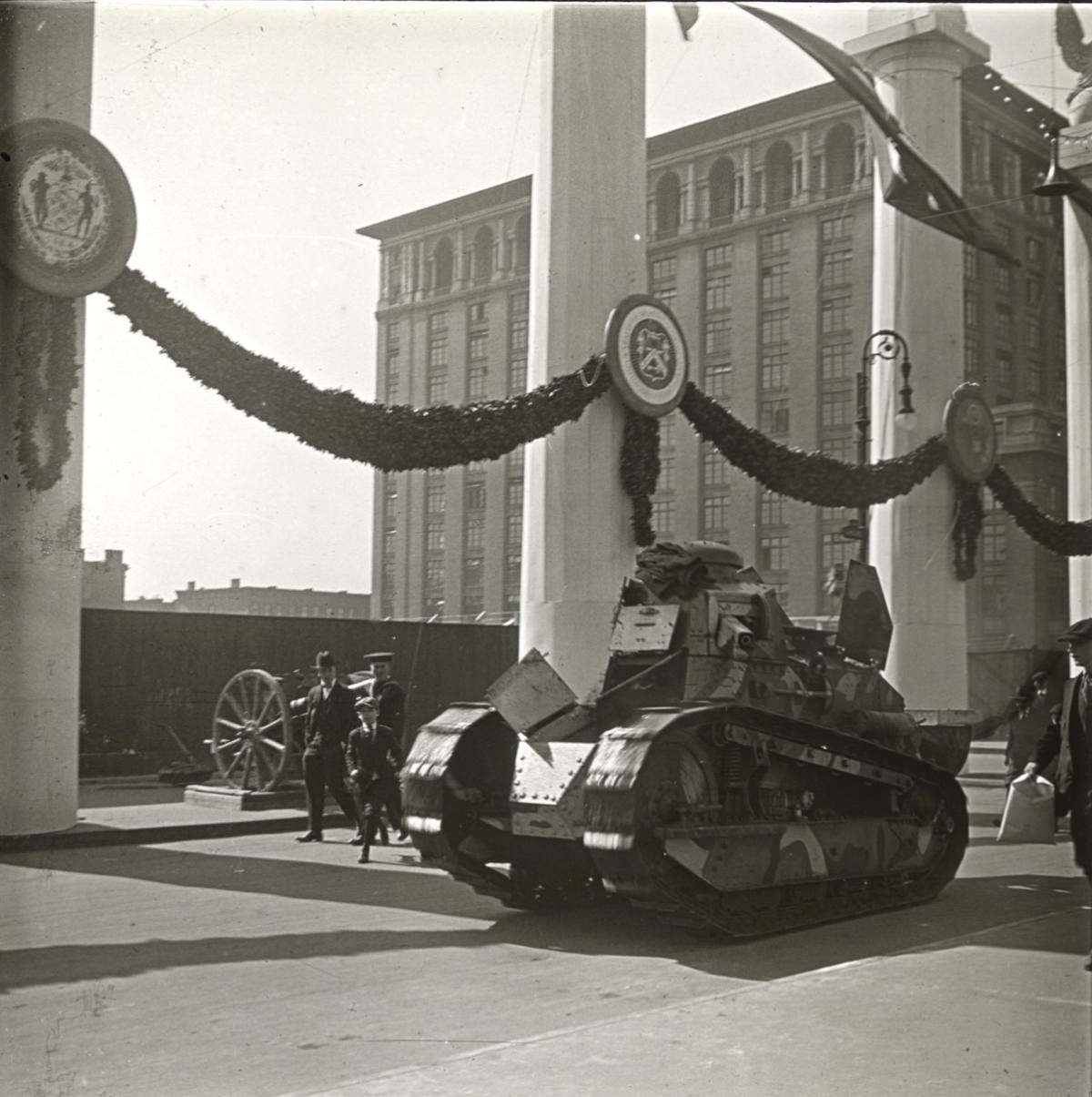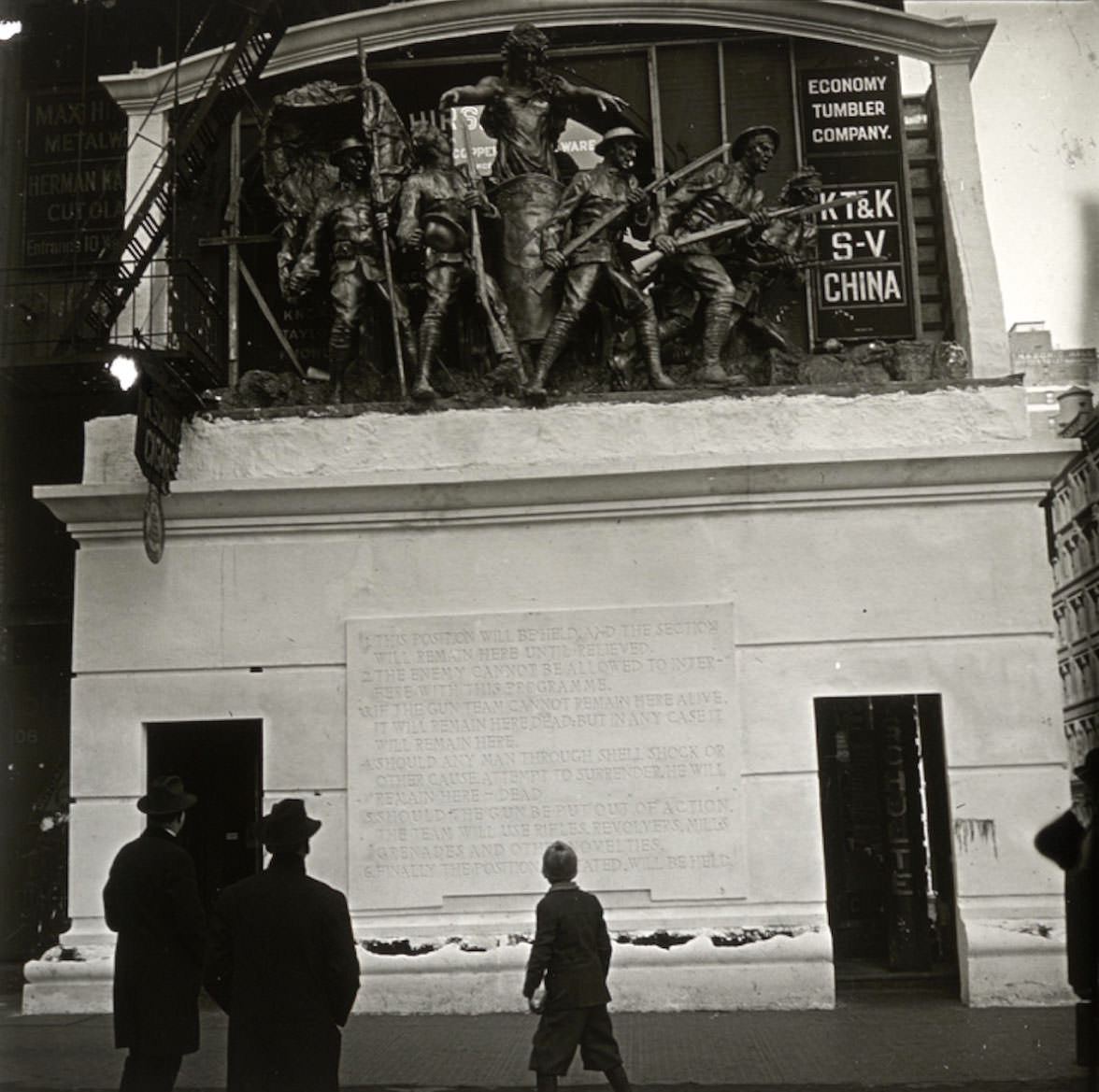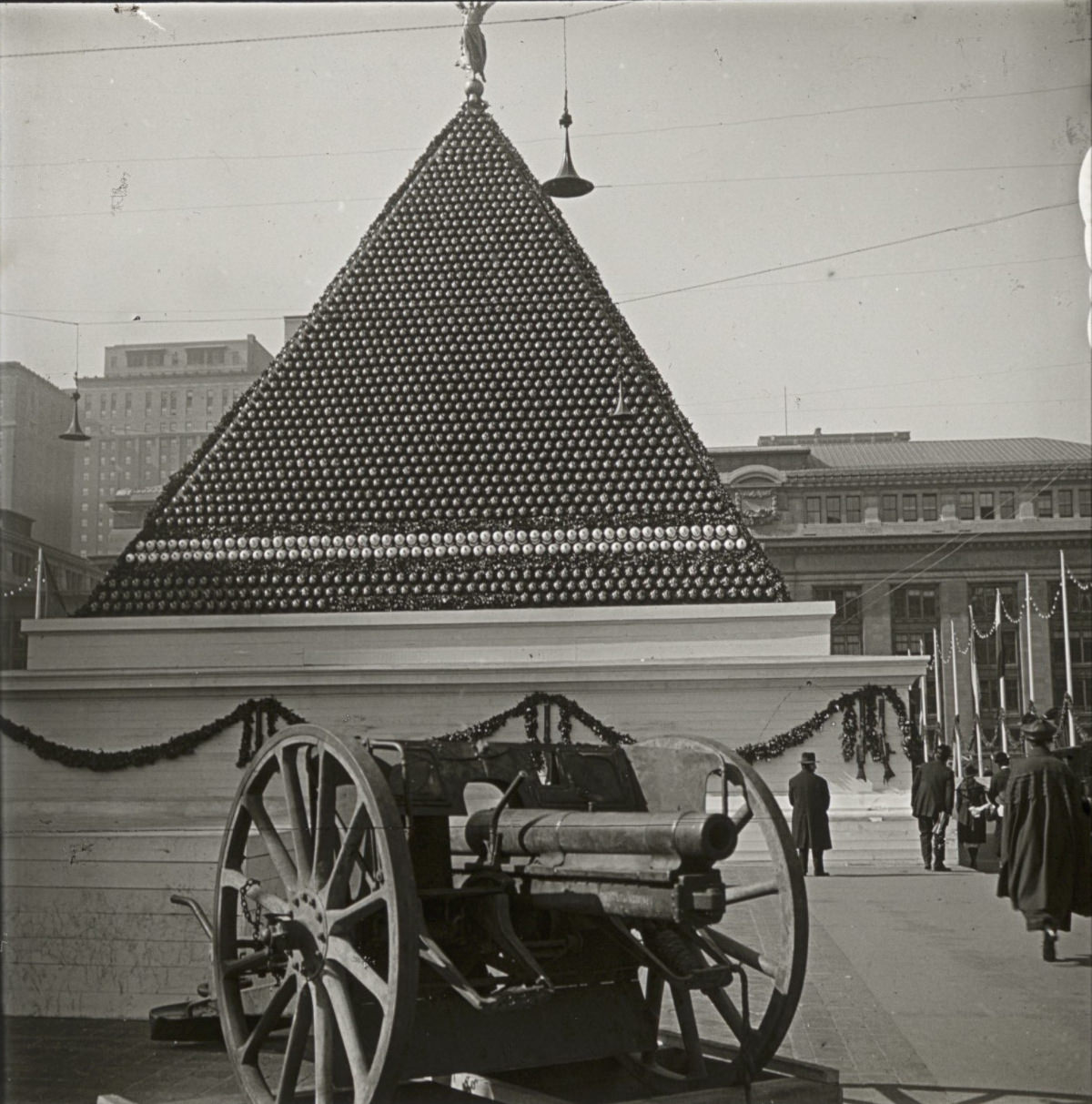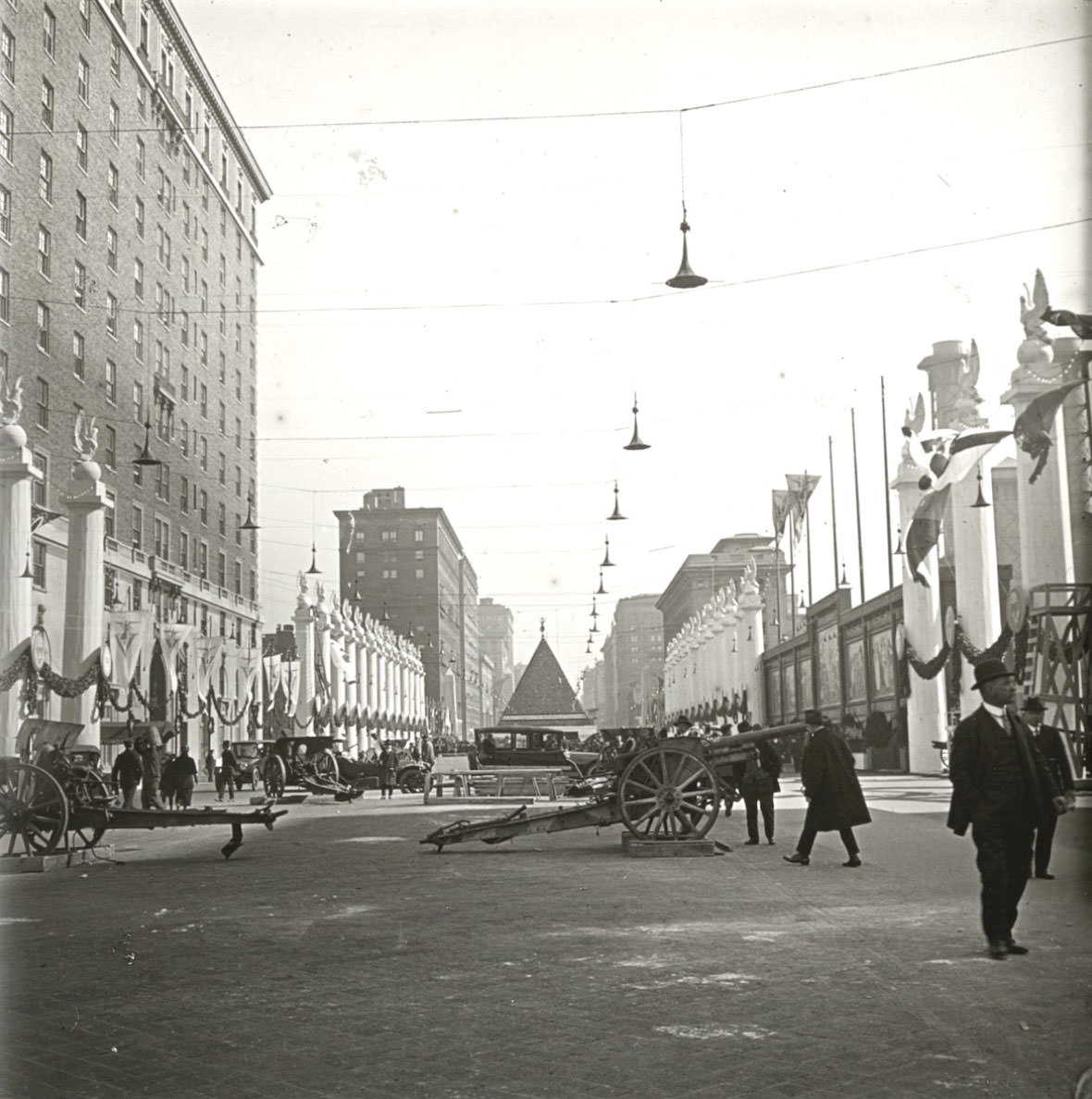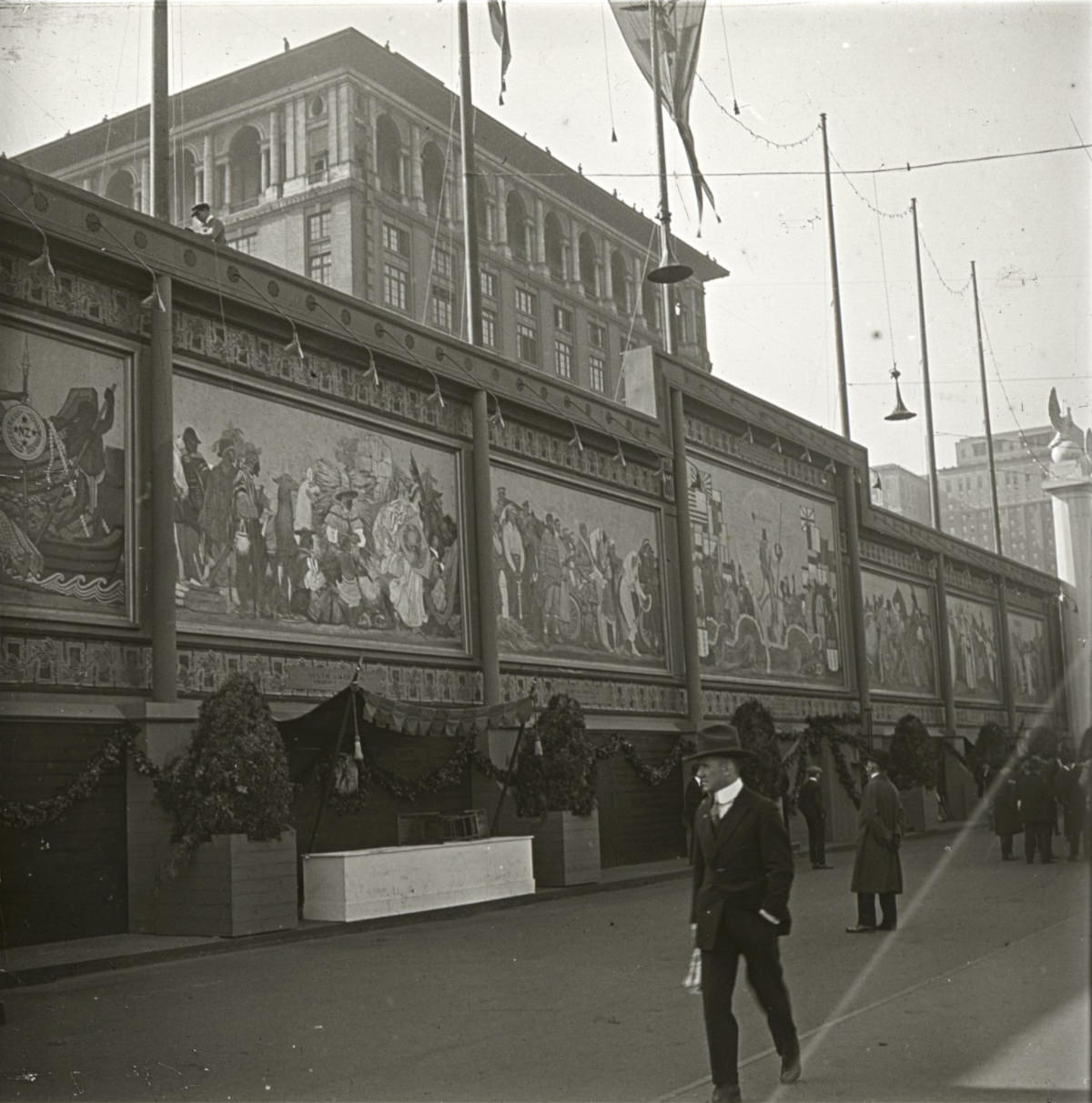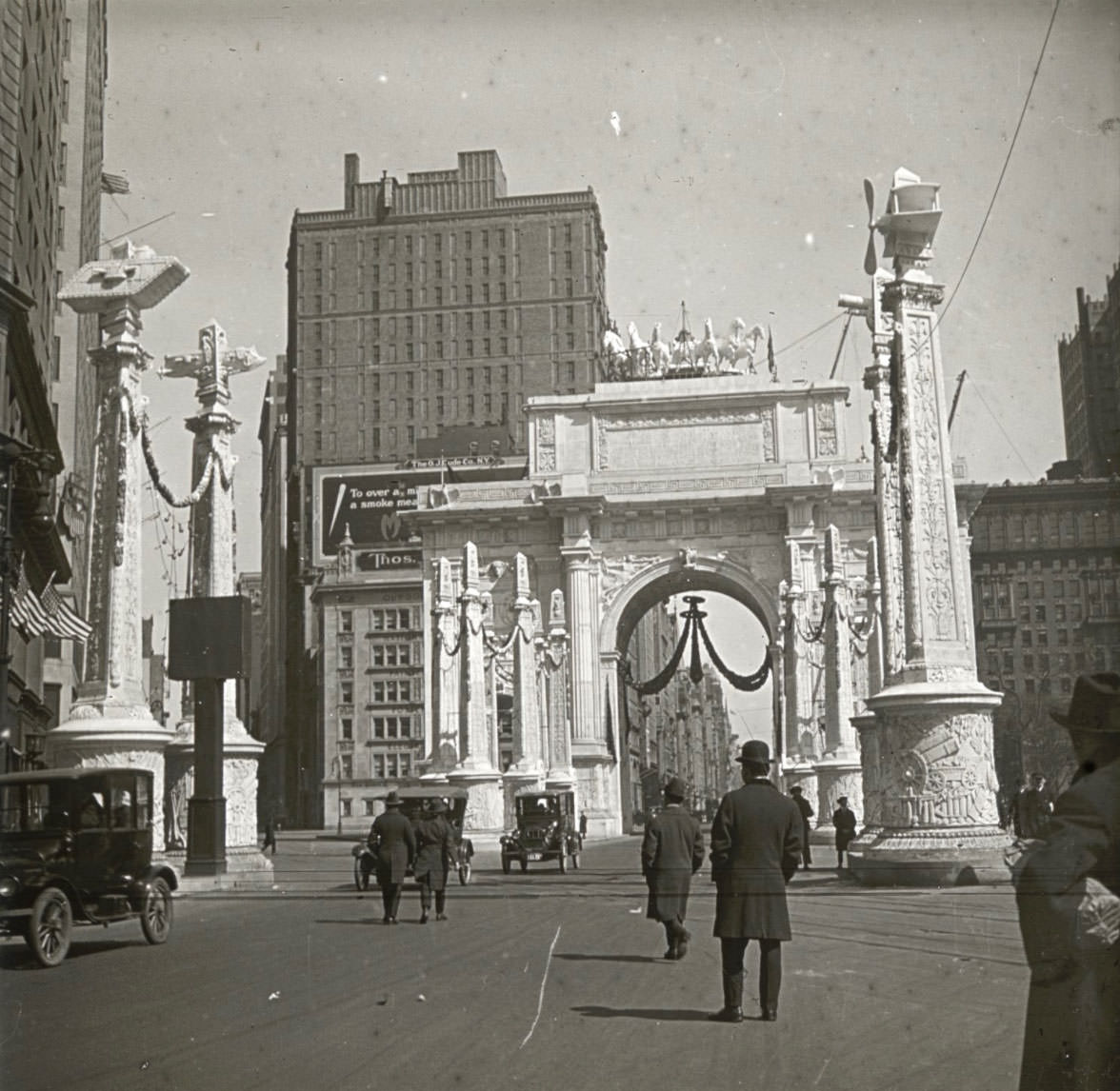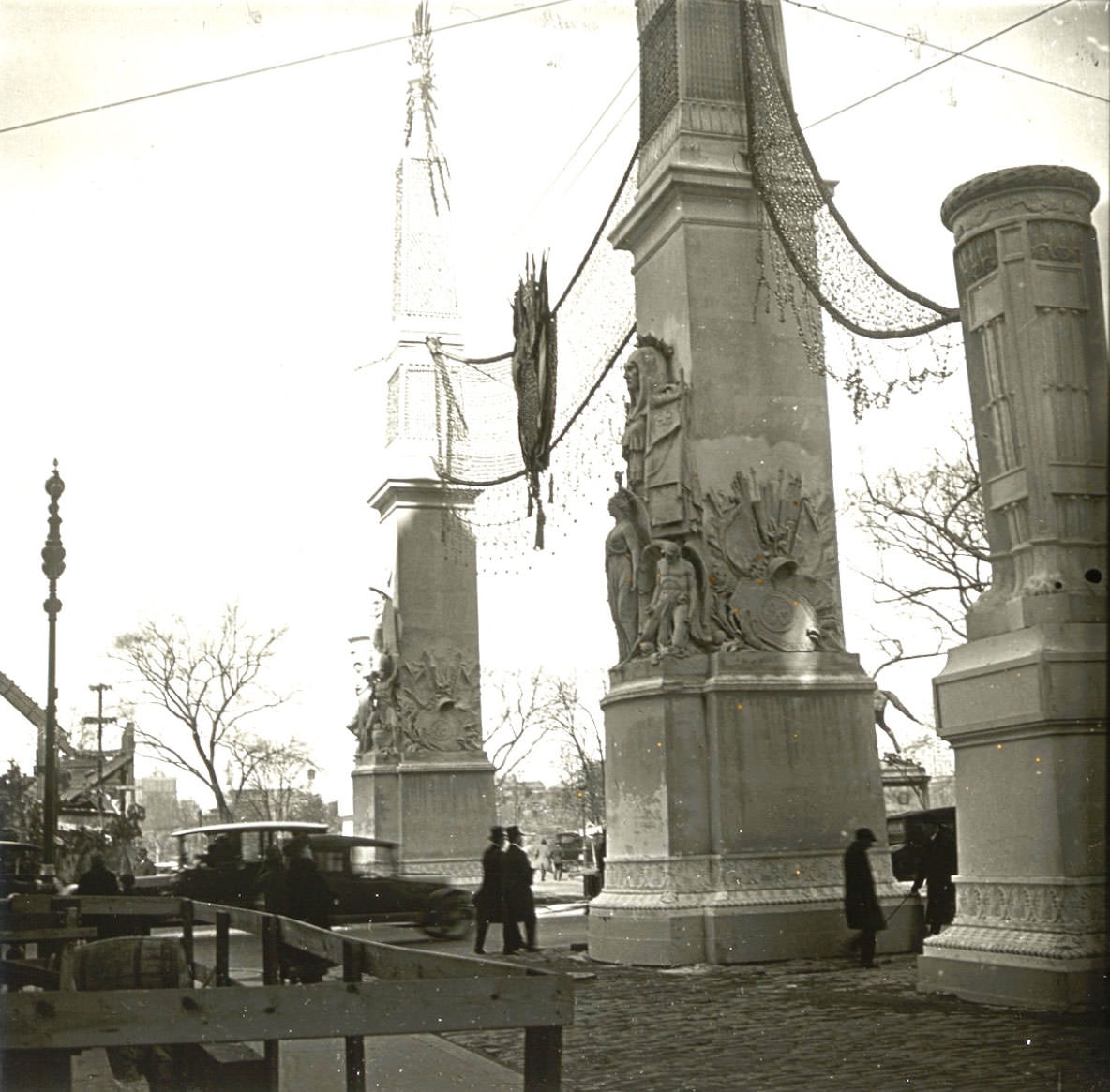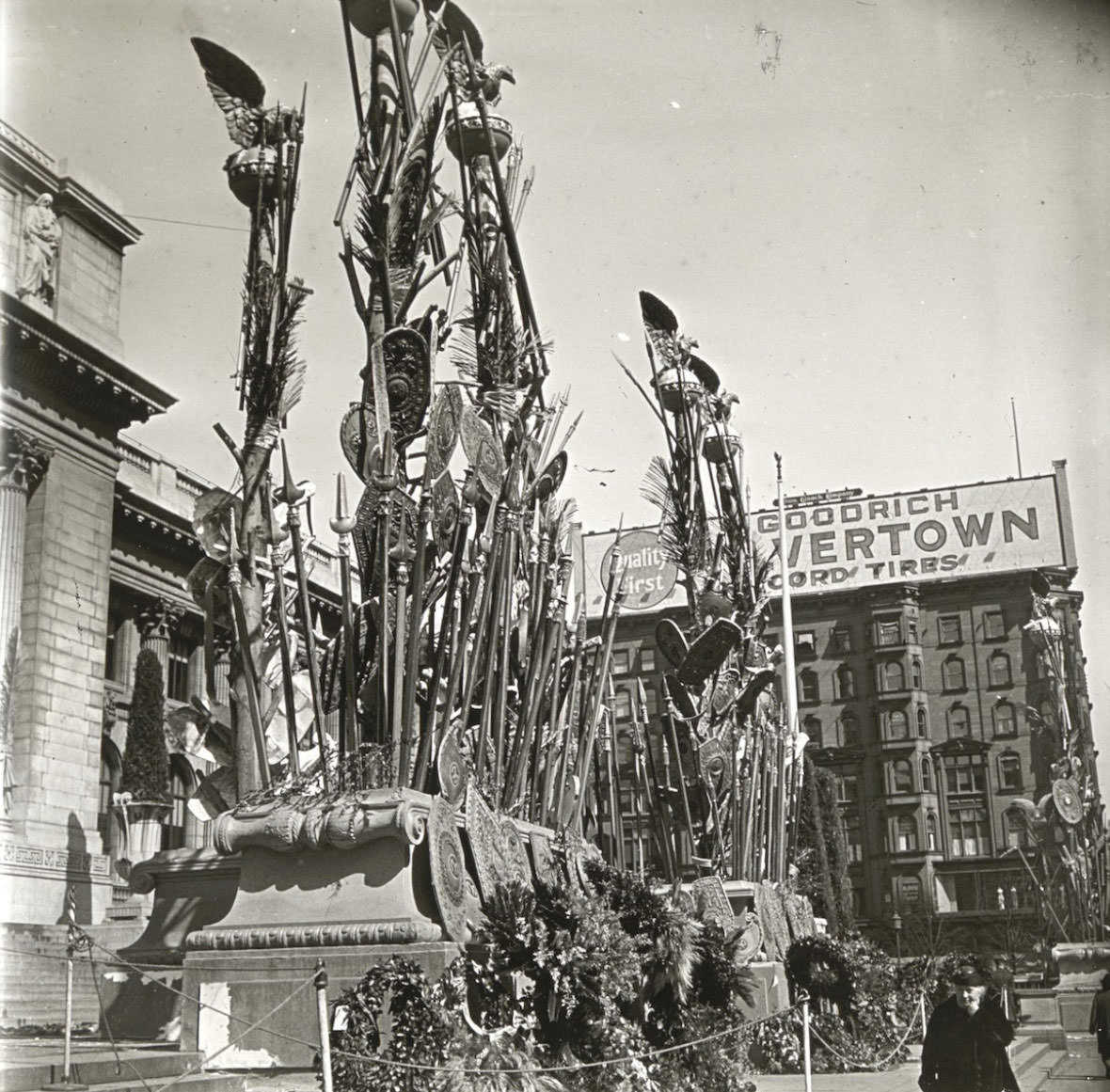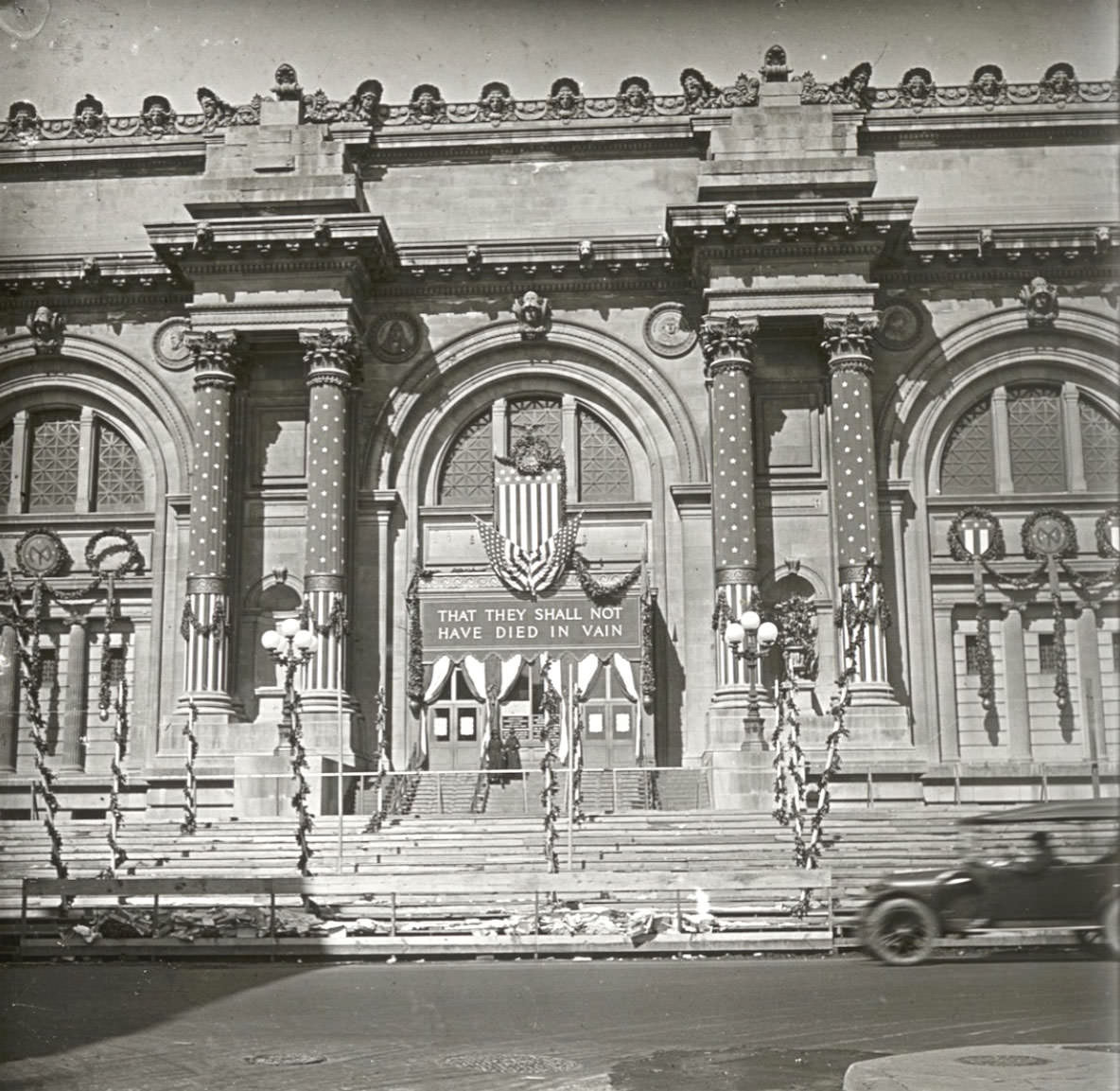The New York National Guard’s 27th Division marched on the streets of Manhattan on March 25, 1919. Two million people watched the division march five miles up Fifth Avenue after they returned from World War I. As people came from upstate New York and surrounding states to see the parade, Manhattan’s population increased by 500,000. There were 10,000 police officers on duty to control the crowds — 6,000 regular cops and 4,000 reserves. Plainclothes detectives were scattered throughout the public to keep an eye out for trouble.
A unique grandstand was built for 500 Civil War veterans and another for 1,000 soldiers from the Spanish-American War. In addition, the parade path was lined by 6,820 wounded Soldiers and Sailors recuperating in New York City hospitals.
At Washington Square, the parade route began with a massive victory arch that featured four balloons floating above the road and white pillars lining the route. Next, crystal glass-covered an arch at 60th Street. At night, searchlights illuminated the structures.


